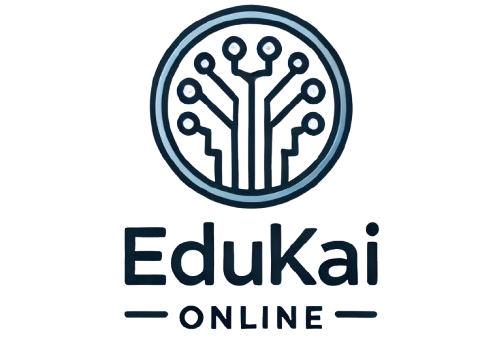Are you tired of throwing money at digital ads without seeing the desired results? Do you struggle to accurately target your audience and maximize your ROI? The solution lies in AI ad targeting optimization, a revolutionary approach that leverages machine learning algorithms to optimize your ad campaigns.
By combining AI-powered targeting with data-driven insights, you can improve ad performance, reduce waste, and drive meaningful conversions.
Introduction to AI Ad Targeting Optimization
AI ad targeting optimization is a game-changing technology that leverages machine learning algorithms to optimize ad campaigns. By analyzing vast amounts of data, AI algorithms identify patterns and trends that help advertisers target their audience more effectively. This results in improved ad performance, increased conversions, and a higher return on investment.
AI ad targeting optimization relies on complex algorithms that analyze vast amounts of data, including user behavior, demographics, and geographic location. These algorithms use this data to identify patterns and trends that predict user preferences and behaviors. By combining this data with machine learning, AI algorithms can optimize ad targeting in real-time, making it possible to reach the right audience at the right time.
The benefits of AI ad targeting optimization are numerous. By leveraging machine learning algorithms, advertisers can improve ad performance, increase conversions, and reduce waste. AI ad targeting optimization also enables real-time optimization, allowing advertisers to adjust their campaigns in response to changing market conditions. Additionally, AI ad targeting optimization can help advertisers reach new audiences and increase brand awareness.
While AI ad targeting optimization offers many benefits, it also presents several challenges. One major challenge is ensuring data quality and accuracy, as poor data can lead to poor ad targeting. Another challenge is integrating AI ad targeting with existing marketing strategies, which can be time-consuming and require significant resources. Additionally, AI ad targeting optimization requires ongoing maintenance and optimization to ensure continued performance.
To get the most out of AI ad targeting optimization, it’s essential to follow best practices. This includes ensuring data quality and accuracy, regularly monitoring and adjusting campaigns, and testing different targeting options. Advertisers should also consider using AI-powered ad targeting in conjunction with other marketing strategies to maximize results.
AI ad targeting optimization is a powerful technology that can help advertisers improve ad performance, increase conversions, and reduce waste. By leveraging machine learning algorithms and big data, AI ad targeting optimization offers a comprehensive approach to ad targeting. With the right strategies and best practices in place, advertisers can unlock the full potential of AI ad targeting optimization and take their marketing efforts to the next level.
The Science Behind AI Ad Targeting
Artificial Intelligence (AI) algorithms analyze vast amounts of data, including user behavior, demographics, and geographic location. These algorithms identify patterns and trends that predict user preferences and behaviors. By combining this data with machine learning, AI algorithms can optimize ad targeting in real-time, making it possible to reach the right audience at the right time.
Benefits of AI Ad Targeting Optimization:
AI ad targeting optimization offers numerous benefits, including improved ad performance, increased conversions, and reduced waste. Additionally, real-time optimization enables advertisers to adjust their campaigns in response to changing market conditions. AI ad targeting optimization also helps advertisers reach new audiences and increase brand awareness.
Challenges and Limitations of AI Ad Targeting:
Challenges and limitations of AI ad targeting optimization include ensuring data quality and accuracy, integrating AI ad targeting with existing marketing strategies, and ongoing maintenance and optimization. Poor data quality can lead to poor ad targeting, while integration requires significant resources.
Best Practices for AI Ad Targeting Optimization:
Best practices for AI ad targeting optimization include ensuring data quality and accuracy, regularly monitoring and adjusting campaigns, and testing different targeting options. Advertisers should also consider using AI-powered ad targeting in conjunction with other marketing strategies to maximize results.
Introduction to AI Ad Targeting Optimization:
AI ad targeting optimization is a game-changing technology that leverages machine learning algorithms to optimize ad campaigns. By analyzing vast amounts of data, AI algorithms identify patterns and trends that help advertisers target their audience more effectively.
Challenges and Limitations of AI Ad Targeting:
While AI ad targeting optimization offers many benefits, it also presents several challenges. One major challenge is ensuring data quality and accuracy, as poor data can lead to poor ad targeting. Another challenge is integrating AI ad targeting with existing marketing strategies, which can be time-consuming and require significant resources.
Best Practices for AI Ad Targeting Optimization:
To get the most out of AI ad targeting optimization, it’s essential to follow best practices. This includes ensuring data quality and accuracy, regularly monitoring and adjusting campaigns, and testing different targeting options. Advertisers should also consider using AI-powered ad targeting in conjunction with other marketing strategies to maximize results.
Benefits of AI Ad Targeting Optimization
The benefits of AI ad targeting optimization are numerous. By leveraging machine learning algorithms, advertisers can improve ad performance, increase conversions, and reduce waste.
AI ad targeting optimization also enables real-time optimization, allowing advertisers to adjust their campaigns in response to changing market conditions.
Additionally, AI ad targeting optimization can help advertisers reach new audiences and increase brand awareness. With AI, advertisers can target specific demographics, behaviors, and interests, resulting in more effective ad targeting.
Challenges and Limitations of AI Ad Targeting
While AI ad targeting optimization offers many benefits, it also presents several challenges. One major challenge is ensuring data quality and accuracy, as poor data can lead to poor ad targeting.
Another challenge is integrating AI ad targeting with existing marketing strategies, which can be time-consuming and require significant resources.
Additionally, AI ad targeting optimization requires ongoing maintenance and optimization to ensure continued performance.
These challenges highlight the importance of careful planning, execution, and ongoing evaluation of AI ad targeting optimization strategies.
Best Practices for AI Ad Targeting Optimization
To get the most out of AI ad targeting optimization, it’s essential to follow best practices. This includes ensuring data quality and accuracy, regularly monitoring and adjusting campaigns, and testing different targeting options.
Advertisers should also consider using AI-powered ad targeting in conjunction with other marketing strategies to maximize results. Additionally, it’s crucial to set clear goals and objectives, track key performance indicators, and make data-driven decisions to optimize ad targeting.
By following these best practices, advertisers can unlock the full potential of AI ad targeting optimization and achieve better ad performance and ROI.
Conclusion: Unlocking the Full Potential of AI Ad Targeting Optimization
In conclusion, AI ad targeting optimization has the potential to revolutionize the way advertisers approach targeting and optimization.
By leveraging machine learning algorithms and big data, advertisers can unlock new insights and make data-driven decisions to improve ad performance.
As the technology continues to evolve, it’s essential to stay ahead of the curve and adapt to new best practices and innovations.
By following the best practices outlined in this article, advertisers can unlock the full potential of AI ad targeting optimization and achieve better ad performance and ROI.
FAQ – Frequently Asked Questions about Artificial Intelligence in Small Business
How can task automation benefit my small business?
Task automation frees up your team from repetitive tasks, increasing productivity and allowing them to focus on more strategic tasks.
What tools can I use for data analysis?
There are various tools available, such as Google Analytics, Tableau, and Microsoft Power BI, that help collect and interpret valuable data.
What are chatbots and how do they improve customer service?
Chatbots are virtual assistants that can answer questions and solve problems at any time, improving customer experience and freeing up your team.
How can I personalize customer experience?
Through data analysis, you can understand customers’ preferences and offer personalized recommendations and promotions.
Why is customer feedback important?
Feedback is essential for identifying areas that need improvement and adjusting your service strategy to ensure customer satisfaction.
Is artificial intelligence accessible for small businesses?
Yes, there are various AI solutions that are accessible and scalable for small businesses to improve efficiency and service.




